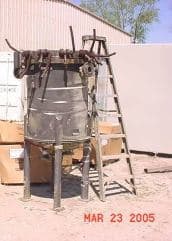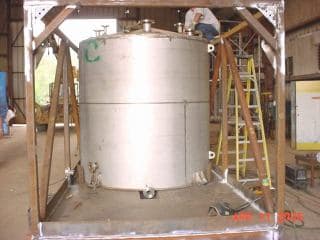
-----
PASSIVATION -- Chelant Passivation Chemicals or Nitric Acid ?
2005
I need to passivate to SS vessels and don't know which system is best - Nitric Acid or the process described below. The vessels are surplus and will be used in a system to to filter and flush lubrication oils.


The vendor provides the following on his website
Selective Abstraction Passivation
... is an electrolytic treatment which provides a passive film superior to the hazardous Nitric/HF pickling, second only to electropolishing. What's even better is it does so while using very mild chemicals and without creating a hazardous waste.
Chelant Passivation Chemicals
The new ASTM A967 standard establishes the use of chelant chemistry to passivate stainless steel. Rather than use the extremely hazardous Nitric or Nitric/HF blends, we can now provide a quality passivation job with milder chemicals such as citric acid blends.
Chelant Passivation Services
Our customers have applauded our move away from the Nitric acid passivation to the newer chelant passivation procedures. Chelant passivation provides the same if not greater level of passivation without the safety concerns. Rather than use a product with a pH of 1, we can now do the job with a pH of 3.5.
Rust Removal
Rust removal from stainless steel can be tricky. . . we have some outstanding methods for removing rust from stainless steel. Not only does it remove a contamination that is likely to spread to other areas, it also passivates the entire surface.
Thanks
- Mandeville, Louisiana
Ed. note: Comparing nitric passivation to non-nitric passivation has usually led to heated debates here, where no one's position budged anyway. It threatens to be worse when we compare nitric acid to a proprietary alternative, but I guess we'll find out how it goes :-)
There are a number of good passivation processes available to the industry today, many of them are safe and environmentally friendly. It is certainly not necessary to use nitric or nitric/HF systems.
ASTM A967 and SAE/AMS2700 allow the use of citric acid formulations for passivation. citric acid is a mild chelant. These specifications are not a generic authorization to use chelating agents for passivation.
There are also excellent products that will remove rust and repassivate the surface of rusted tanks, etc. However, once pitting has occurred on the surface it is no simple process.
Let us know if we can help in any way.

Lee Kremer
Stellar Solutions, Inc.
McHenry, Illinois

2005
this text gets replaced with bannerText

Q, A, or Comment on THIS thread -or- Start a NEW Thread